Power of Culture Blog
Live Music Takes Flight at Logan
We’re imagining this spirit of performance—of unexpected joy—everywhere across the Commonwealth
Maggie Holtzberg, Folklorist
Genie and Dan St. John run Chena River Marblers in the Massachusetts’ Pioneer Valley, a region known for book arts. Working out of a home studio, they produce stunning marbled patterns on paper and silk. The marbled paper is used by book binders and paper artists, the silk in the making of scarves and ties. The process of marbling is almost magical. (Fitting then, that Regina goes by the nickname “Genie”). A bath of water and a thickening agent, such as carrageenan (dried seaweed) is prepared, onto which droplets of paint are applied. Genie explains that it is the thickened liquid that allows the paint to float on the surface.
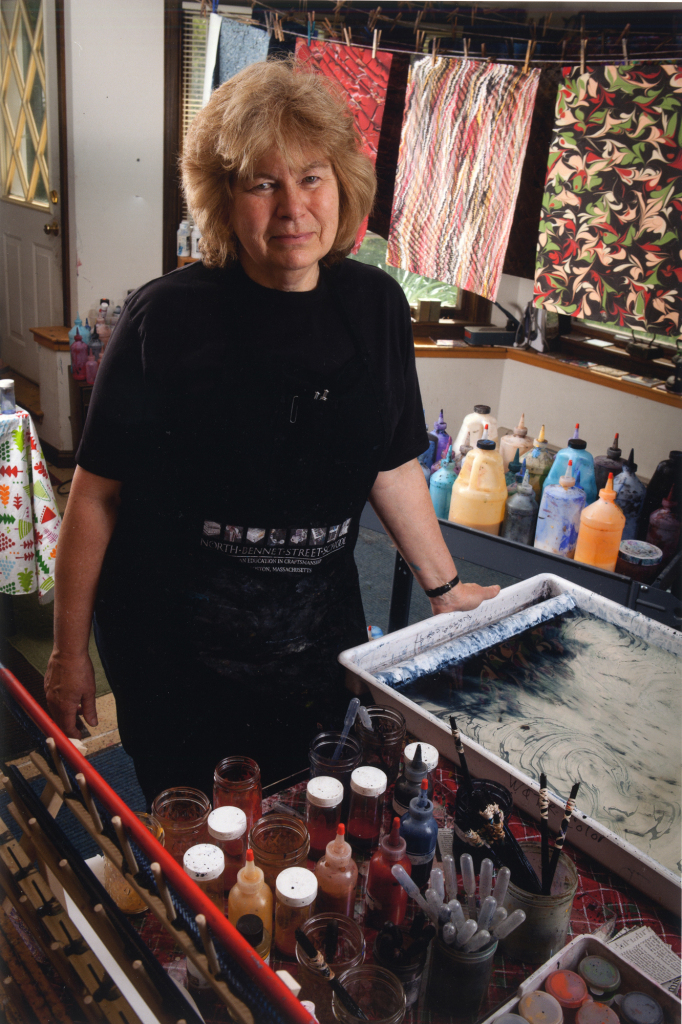
“You put all these colors on your bath and you manipulate them. Comb them this way and that, and the colors don’t get mixed up. The pink stays pink, the white stays white, and you end up with these beautiful patterns right on the surface of your bath.” Next, the image is carefully transferred to an absorbent surface, such as paper or silk.
Genie works mostly using acrylic paints for her silk and paper marbling. Dan points out one of Genie’s enviable talents, saying, “Genie has got a perfect pitch for colors.” Complimenting this is Dan’s background as a physics and chemistry teacher which gives him a grounding in the chemical makeup of materials and processes. Teachers at heart, they suggest that by using the marbling process, a whole curriculum could be created to explore basic chemical properties, such as viscosity, density, acidity, and surface tension. “Just take the different properties of fiber. Take the chemistry of ligans, which make one organic thing stick to another. That’s why colors stick to a fabric. . .” Genie adds, “Once they’ve learned all of that, they can use their papers to make books and write it all down.”
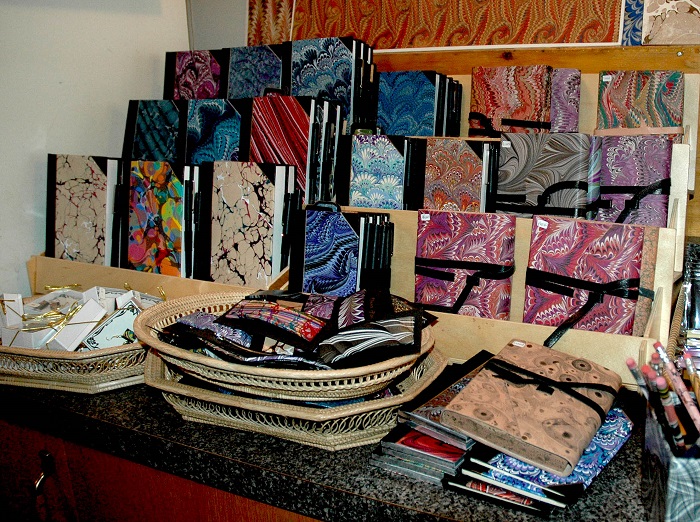
Dan builds much of the equipment, including the many different styles of combs, which when pulled through the bath, create unique patterns.

Because no paint company manufactures colors specifically for marbling, Chena River Marblers create their own paints (grinding up pigments, adding binders, mulling them together), which allows them more control in how the paint will spread on the liquid surface. Dan favors the old style marbling; using watercolors, he creates what are called “tiger eyes.” Below are some examples which look like images from the natural world.
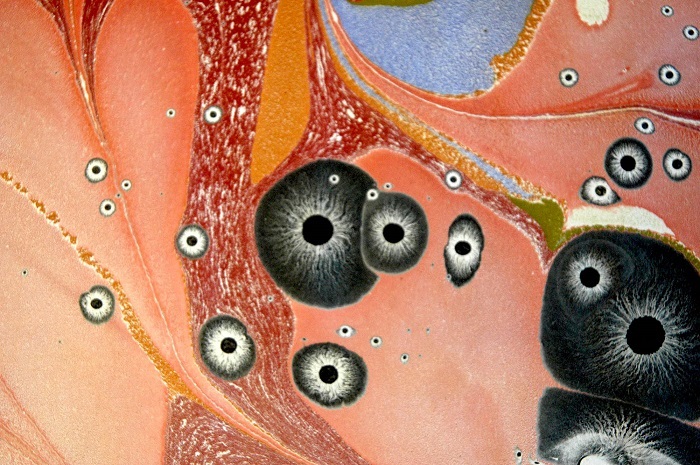
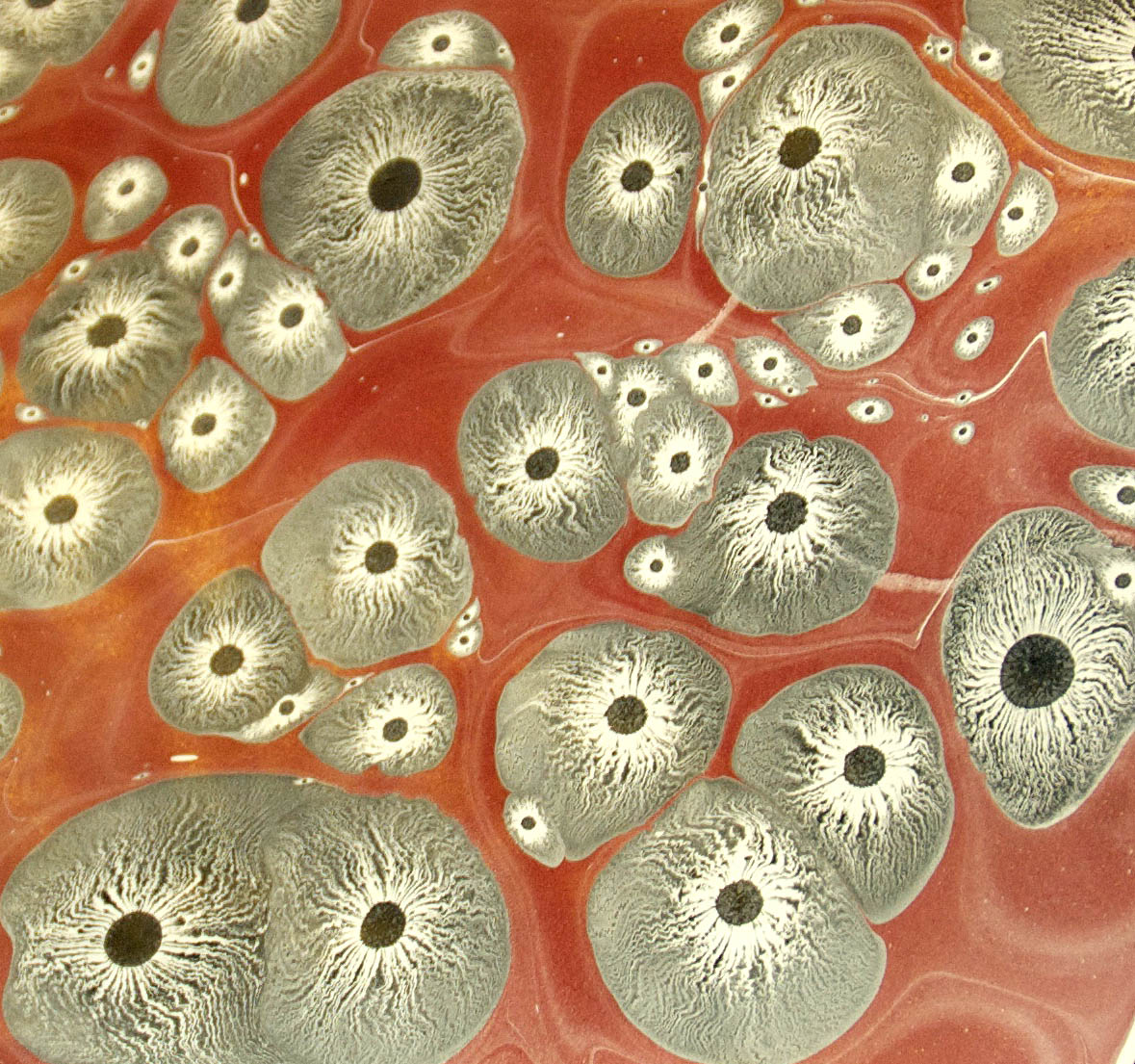
Another technique is called edge marbling, which was more commonly used in the production of 18th and 19th century books. With marbled edges and end sheets, a book would end up looking like a piece of marble.
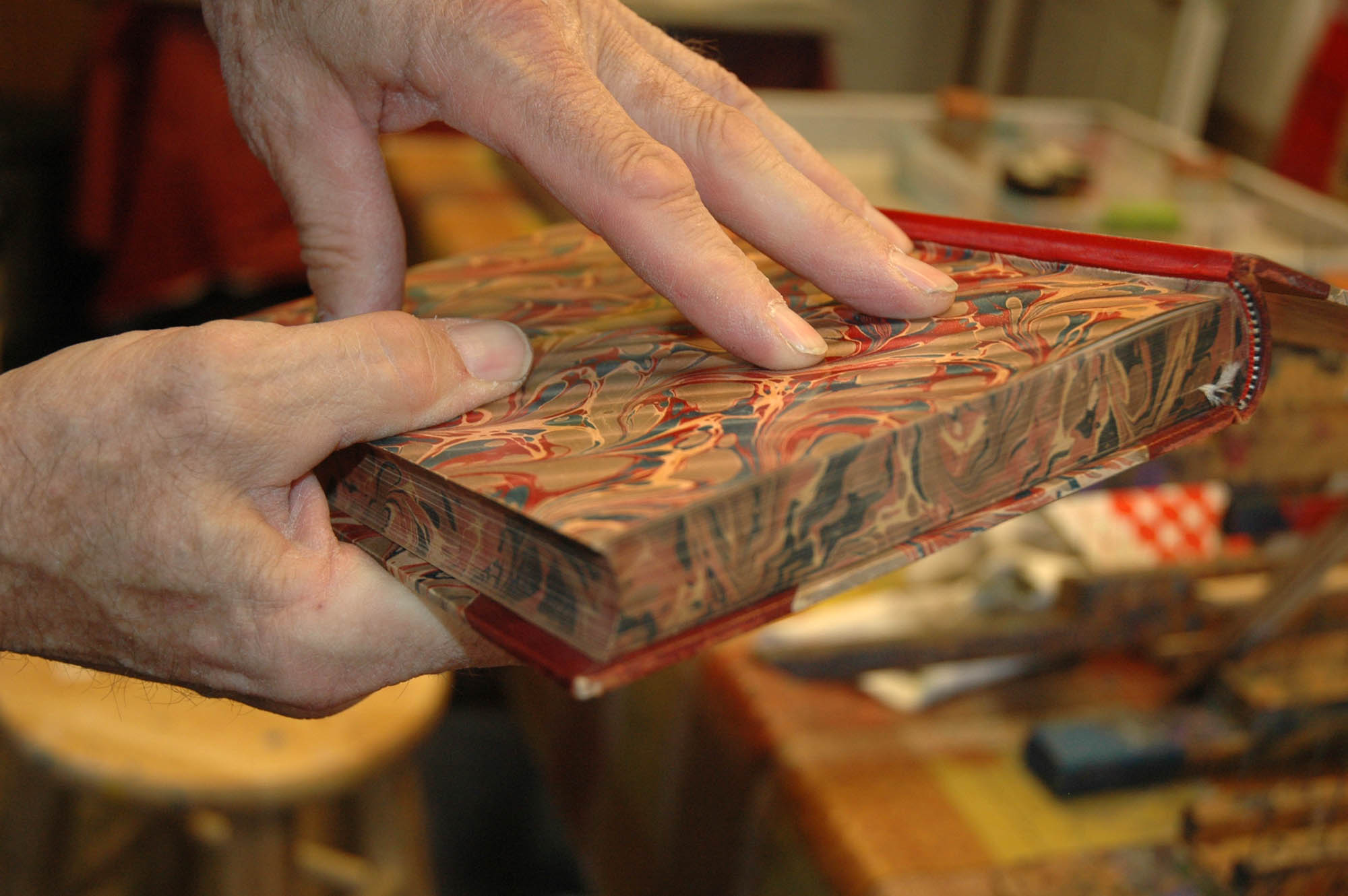
Together, Genie and Dan St. John convey a passion for the marbling craft, a facility for teaching, and a dedication to passing on the tradition. They were a tremendous draw demonstrating paper marbling at the 2014 Lowell Folk Festival, where the theme of the craft area was paper traditions.
This blog post originally appeared on our Keepers of Tradition blog on April 2, 2014.